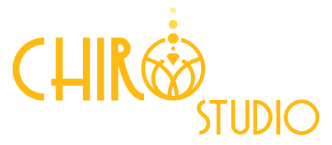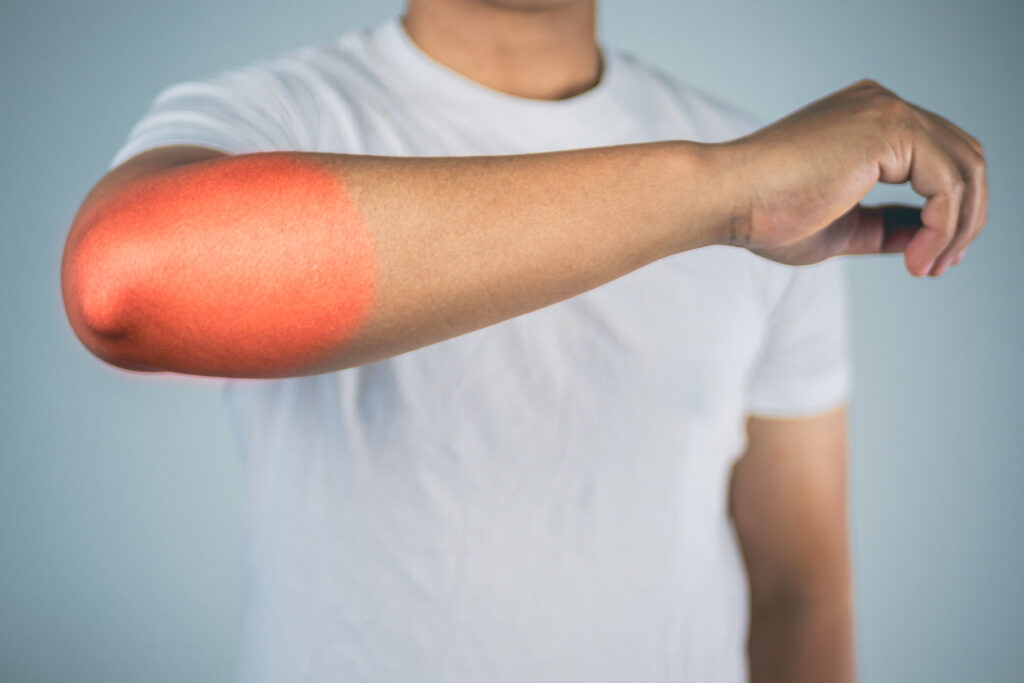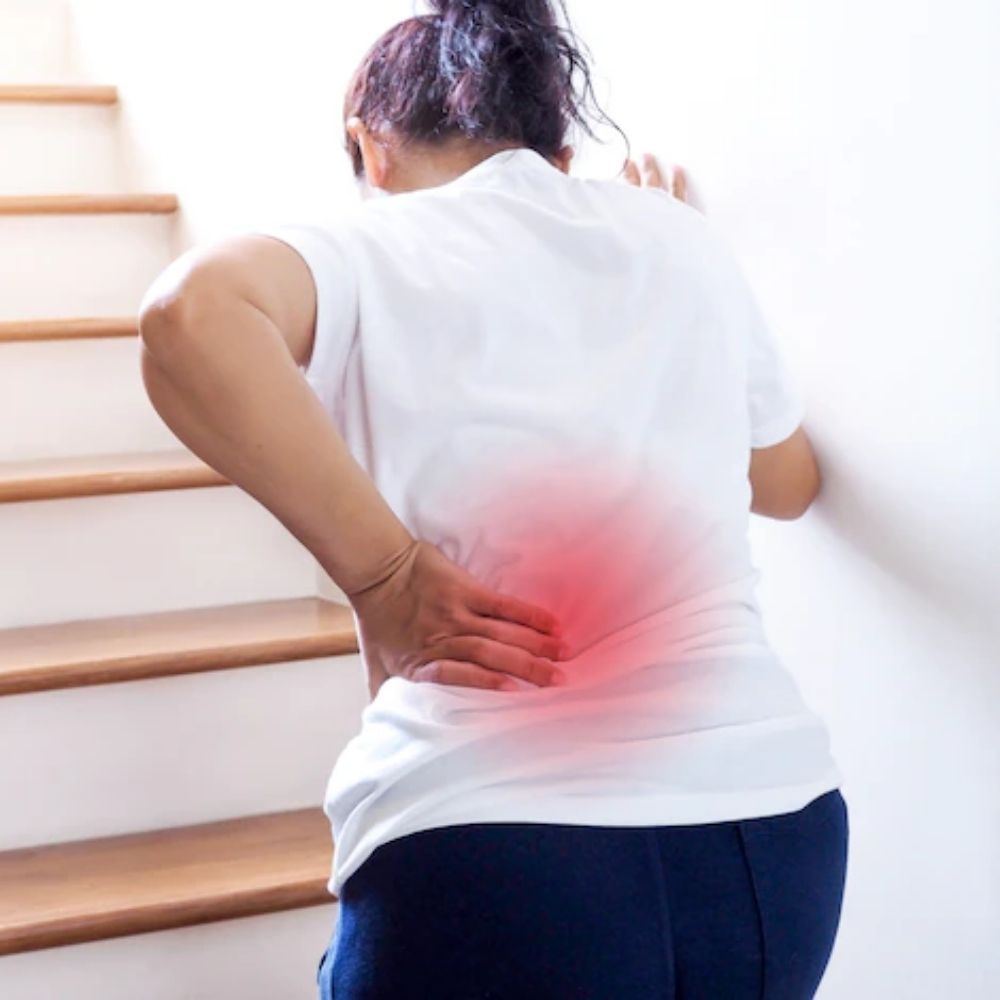Shoulder pain is a common ailment that can range from a minor annoyance to a debilitating condition. Whether you’re an athlete, an office worker, or simply someone going about their daily routine, the chances are you’ve experienced shoulder discomfort at some point in your life. Understanding the various types and causes of shoulder pain is crucial for effective management and prevention. In this blog post, we’ll delve into the world of shoulder pain, exploring the spectrum of everyday strains that can lead to discomfort and the more serious underlying conditions that demand attention. Whether you’re seeking insights on how to alleviate that nagging ache or hoping to become better informed about potential red flags, this comprehensive guide will help you navigate the intricacies of shoulder pain.
From overexertion during workouts to poor posture while working at a desk, our shoulders bear the brunt of many activities. However, shoulder pain can also signal more serious issues like rotator cuff injuries, arthritis, or even referred pain from organs like the heart or gallbladder. By recognizing the types and causes of shoulder pain, you’ll be better equipped to take proactive steps toward maintaining shoulder health and seeking appropriate medical care when needed. So, let’s begin this exploration into the world of shoulder discomfort, empowering you with knowledge to make informed decisions about your well-being and pain management strategies.
Anatomy of the Shoulder
The shoulder is one of the most mobile joints in the human body. Composing the humerus (upper arm bone), scapula (shoulder blade), and clavicle (collarbone), this intricate joint also contains various muscles, tendons, and ligaments that facilitate movement and stability. Its complexity makes it susceptible to a range of issues.
Before delving into the different types of shoulder pain at Chiro Studio and their causes, it’s crucial to understand the anatomy of the shoulder joint. The shoulder is made up of several key components:
Bones: The main bones of the shoulder are the humerus (upper arm bone), scapula (shoulder blade), and clavicle (collarbone).
Joints: The shoulder has three main joints: the glenohumeral joint, the acromioclavicular joint, and the sternoclavicular joint. The glenohumeral joint is the primary ball-and-socket joint responsible for most of the shoulder’s mobility.
Muscles and Tendons: The shoulder is surrounded by a complex network of muscles and tendons, including the rotator cuff muscles, which help stabilize and move the joint.
Bursa: The shoulder joint contains fluid-filled sacs called bursae, which reduce friction between the bones, muscles, and tendons.
Types of Shoulder Pain in Cocoa
- Acute Shoulder Pain
Acute shoulder pain typically comes on suddenly and is often the result of a specific injury or trauma. Common causes of acute shoulder pain include:
- Rotator Cuff Tears: A tear in one or more of the rotator cuff tendons can result from lifting heavy objects, falling, or repetitive overhead movements.
- Fractures: A broken collarbone or a fracture in the humerus can cause severe shoulder pain.
- Dislocations: When the shoulder joint is forced out of its normal position, it can lead to a dislocation. This is often seen in contact sports or accidents.
- Chronic Shoulder Pain
Chronic shoulder pain persists over an extended period, often for months or even years. It can significantly affect your daily life and may be caused by:
- Tendinitis: Inflammation of the tendons in the shoulder, known as tendinitis, can result from overuse or age-related degeneration.
- Bursitis: Inflammation of the bursae in the shoulder can lead to bursitis, which is often associated with repetitive motions or prolonged pressure on the shoulder.
- Arthritis: Osteoarthritis and rheumatoid arthritis can affect the shoulder joint, causing chronic pain and reduced mobility.
- Referred Shoulder Pain
Referred shoulder pain is discomfort felt in the shoulder but originating from another part of the body. Common causes of referred shoulder pain include:
- Neck Issues: Problems in the neck, such as herniated discs or nerve compression, can radiate pain into the shoulder.
- Heart Conditions: In some cases, shoulder pain can be a symptom of a heart condition, particularly in the left shoulder or arm.
- Overuse or Strain-Related Pain
Everyday activities and repetitive movements can lead to overuse or strain-related shoulder pain. This type of pain can be attributed to:
- Poor Posture: Slouching or sitting at a desk for extended periods can strain the muscles and tendons in the shoulder.
- Lifting and Carrying: Improper lifting techniques or carrying heavy loads can strain the shoulder muscles.
- Sports and Exercise: Athletes are susceptible to shoulder pain due to the demands of their sports, such as throwing, swimming, or weightlifting.
Now that we’ve explored the different types of shoulder pain, let’s delve deeper into the specific causes associated with each type.
Causes of Shoulder Pain in Cocoa
- Rotator Cuff Tears
Rotator cuff tears are a common cause of acute shoulder pain. They can occur due to:
- Trauma: A fall or direct blow to the shoulder can result in a tear.
- Overuse: Repetitive overhead movements, as seen in athletes or certain professions, can lead to gradual wear and tear of the rotator cuff.
- Age-Related Changes: As we age, the tendons of the rotator cuff can become weaker and more susceptible to tears.
- Fractures and Dislocations
Fractures and dislocations are often caused by accidents or trauma:
- Falls: A fall onto an outstretched arm can lead to fractures or dislocations.
- Sports Injuries: High-impact sports or contact sports can result in shoulder injuries, including fractures and dislocations.
- Tendinitis and Bursitis
Tendinitis and bursitis are typically caused by repetitive movements or overuse:
- Repetitive Motions: Activities that involve repetitive shoulder movements, such as painting, swimming, or throwing, can lead to these conditions.
- Prolonged Pressure: Leaning on the shoulder for extended periods, as in the case of using a computer mouse, can cause bursitis.
- Arthritis
Arthritis can affect the shoulder joint and cause chronic pain:
- Osteoarthritis: This type of arthritis results from the wear and tear of the shoulder joint over time.
- Rheumatoid Arthritis: An autoimmune disease that can affect multiple joints, including the shoulder.
- Neck Issues
Pain in the shoulder can be referred from the neck due to:
- Herniated Discs: When the discs in the neck press on nerves, it can cause pain that radiates into the shoulder.
- Nerve Compression: Compression of nerves in the neck can result in pain and discomfort in the shoulder.
- Heart Conditions
In some cases, shoulder pain can be a symptom of heart-related issues, such as angina or a heart attack. This type of referred pain is more common in the left shoulder or arm and is often accompanied by other symptoms like chest pain, shortness of breath, or nausea.
- Poor Posture
Long hours spent in poor posture, such as slouching or hunching over a desk, can strain the muscles and ligaments in the shoulder, leading to chronic pain and discomfort.
- Lifting and Carrying
Incorrect lifting techniques or carrying heavy loads can put excessive strain on the shoulder muscles and may result in acute pain or overuse injuries.
- Sports and Exercise
Athletes who engage in sports that require repetitive or forceful shoulder movements, such as baseball, tennis, or weightlifting, are at risk of developing shoulder pain and injuries.
How to Prevent Shoulder Pain Conditions in Cocoa
Preventing shoulder pain and related conditions involves a combination of lifestyle adjustments, proper body mechanics, and regular exercise. Whether you’re an athlete, have a physically demanding job, or simply want to maintain good shoulder health, here are some tips to help prevent shoulder pain and associated conditions:
1. Maintain Good Posture
- Keep your shoulders relaxed and down rather than hunched up.
- Sit and stand with your back straight, and align your head over your shoulders.
2. Ergonomics at Work
- Adjust your workspace to ensure that your computer, desk, and chair are at the right height to minimize strain on your shoulders.
- Use ergonomic tools like a chair with proper lumbar support and a keyboard and mouse that promote neutral wrist and shoulder positions.
3. Strengthen Shoulder Muscles
- Incorporate regular strength training exercises that target the muscles surrounding the shoulder joint, including the rotator cuff muscles.
- Focus on balanced muscle development to prevent muscle imbalances that can lead to pain.
4. Warm Up Before Activity
- Prior to engaging in sports or strenuous activities, warm up your shoulder muscles with gentle stretches and range-of-motion exercises.
- Gradually increase the intensity of your activities rather than jumping into strenuous exercises without proper preparation.
5. Technique Matters
- Ensure that you use proper form and technique when engaging in sports or physical activities to avoid unnecessary strain on your shoulders.
- Consider working with a coach or trainer to improve your technique.
6. Rest and Recovery
- Allow your shoulders adequate time to rest and recover between workouts or physically demanding activities.
- Pay attention to any early signs of discomfort and don’t push through pain.
7. Avoid Overhead Activities
- Minimize repetitive overhead movements, such as lifting heavy objects or reaching overhead, as these can strain the shoulder.
- When lifting, use your legs and core muscles to reduce the load on your shoulders.
8. Maintain a Healthy Weight
- Excess body weight can contribute to shoulder pain by putting extra stress on the joints and muscles.
- Aim for a balanced diet and regular exercise to maintain a healthy weight.
9. Stretching and Flexibility
- Incorporate regular stretching exercises to maintain flexibility in your shoulder joints and muscles.
- Yoga and mobility exercises can be particularly beneficial.
10. Listen to Your Body
- Pay attention to any signs of discomfort or pain in your shoulders, and seek medical attention if pain persists or worsens.
- Early intervention can prevent minor issues from developing into more serious conditions.
By incorporating these preventive measures into your daily life and fitness routine, you can significantly reduce the risk of developing shoulder pain and related conditions. Remember that everyone’s body is different, so it’s essential to tailor your approach to your specific needs and consult a healthcare professional if you have specific concerns or ongoing issues with your shoulder health.
Shockwave Therapy for Shoulder Pain in Cocoa
Shockwave therapy, also known as extracorporeal shockwave therapy (ESWT), is a non-invasive medical treatment that uses high-energy acoustic waves to stimulate healing and reduce pain in various musculoskeletal conditions, including shoulder pain. It has been used as a treatment option for a range of conditions, including tendinopathies and calcific shoulder tendinitis.
Here’s how shockwave therapy in Coca for shoulder pain typically works:
1. Assessment: Before undergoing shockwave therapy, a healthcare provider will assess your shoulder condition to determine if it is a suitable treatment option. They will usually perform a physical examination, review your medical history, and may use imaging techniques like ultrasound or MRI to pinpoint the exact location of the problem.
2. Treatment session: During a shockwave therapy session, you will typically lie down, and a gel or coupling medium is applied to the skin over the affected shoulder area. This gel helps transmit the shockwaves effectively. A device called a shockwave generator is then used to deliver focused, high-energy acoustic waves to the targeted area. The waves are delivered in short bursts, and you may feel a sensation of pressure or mild discomfort during the procedure.
3. Mechanism of action: Shockwave therapy is believed to work by several mechanisms, including:
- Promoting blood flow: Shockwaves stimulate the growth of new blood vessels (angiogenesis) in the treated area, improving circulation and oxygen supply to the tissues.
- Reducing pain: Shockwaves can disrupt pain pathways and decrease the release of pain-inducing substances in the body.
- Promoting tissue healing: Shockwaves stimulate the production of collagen and other healing factors, helping to repair damaged tissues.
4. Number of sessions: The number of shockwave therapy sessions required varies depending on the specific condition and the individual’s response to treatment. Typically, a series of sessions are scheduled over several weeks, with each session lasting approximately 15-30 minutes.
5. Post-treatment care: After a shockwave therapy session, it’s common to experience some soreness or discomfort in the treated area. Your healthcare provider may recommend rest and icing to alleviate any discomfort. Physical therapy exercises and lifestyle modifications may also be part of the overall treatment plan.
It’s essential to consult with a qualified healthcare professional, such as a physiotherapist or orthopedic specialist, to determine if shockwave therapy is a suitable option for your shoulder pain. Not everyone is a candidate for this treatment, and its effectiveness can vary depending on the underlying condition and individual factors.
Additionally, the use of shockwave therapy for specific conditions and its success rate may continue to evolve with ongoing research and advancements in medical technology, so it’s essential to discuss the latest treatment options with your healthcare provider.
Shoulder Pain & Chiropractic Care in Cocoa
Understanding the various types and causes of shoulder pain is essential for effectively managing this common ailment. From the everyday strains caused by repetitive activities to the potentially serious underlying conditions like rotator cuff injuries or arthritis, identifying the root cause of your shoulder discomfort is the first step toward finding relief.
Managing shoulder pain effectively often involves a holistic approach that includes chiropractic care. At Chiro Studio, located in the heart of Cocoa, we understand the impact that shoulder pain can have on your daily life and your ability to enjoy physical activities. Our skilled chiropractors specialize in assessing and addressing musculoskeletal issues, including those related to the shoulder. With a focus on spinal adjustments, soft tissue therapies, and rehabilitation exercises, we aim to provide you with a personalized treatment plan to alleviate pain, improve range of motion, and enhance overall shoulder health.
If you’re tired of shoulder pain limiting your lifestyle, don’t hesitate to contact us at (321) 431-7470. Our dedicated team at Chiro Studio is here to help you find relief and regain your quality of life. We believe in the power of chiropractic care to promote healing and wellness, and we’re committed to supporting you on your journey toward a pain-free and active future. Your shoulder health matters to us, and we look forward to being your partners in achieving lasting relief and optimal well-being.




